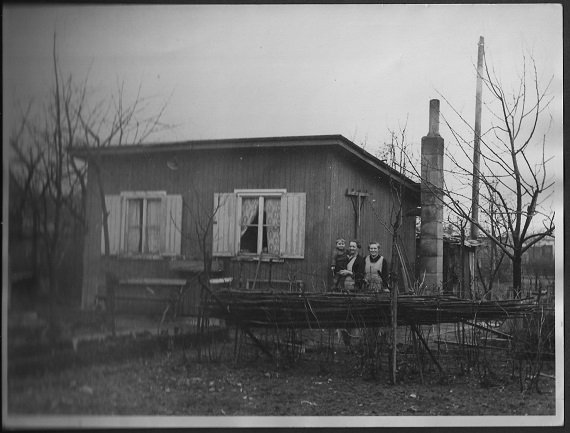Illa - Part 21
5 Year Old German Girl Remembers Living During WWII
This is a true story, hand-written by Ilse and posted by her daughter on Steemit.

The next morning, mom was up early even before me, fussing with her hair in front of the mirror. Cutting something here, clipping something there, and then holding the sides back with clips. I thought it looked like it always did; only the bun was missing. “Mutti, it looks good, nobody will even notice.” Oh, but they did! How dare my Mom do such a thing as to cut her hair. What would the people in town say? Everybody would know that we have lice. She was not to go outside like this. Mom did anyway.
She and I went to the little store. People were grinning and were making unfriendly remarks about lice to her. Mom left the store with her head up high and said. “This is the latest fashion and accepted in civilized cities and towns.”
Once outside, mom said to me. “These people have a nerve! They all have lice themselves. They are full of it!” I now know that she was not only talking about lice.
Good news came the next day. Another letter from Oma was delivered. That happened in those days. Mail delivery was still unpredictable. This letter really cheered Mom up. Oma wrote:
We have erected an LEI house in the garden. They named these prefab houses after the Finnish architect Robert Lei who designed them. The house has two rooms, a built-in shelf, which divides the kitchen and the living area. One room is a little smaller and it is the bedroom. All we had to do was build a chimney outside for the hearth in the kitchen. The government and the allied forces provided us with the houses. They are quite sufficient and I’m happy in our Lei-house. There are going to be thousands of them, all around the outskirts of the city. Maybe we can get one for you and Illa. Opa put in a request on your behalf also requesting a garden like ours. There is a chance to get the one three parcels up from us. Things are looking up.
After that letter, Mom’s spirit lifted quite a bit. She still worried about my father and tears came easily into mom’s eyes, especially when she spoke of him.
It was cold outside and mom and I enjoyed snuggling under the warm covers of the bed we shared. Mom started telling stories again, which she had stopped for a while. Only now, they were real stories, not from a book like Andersen or the Brothers Grimm. She told me about her childhood; Oma’s background four generations before us. They came from Denmark. “You see, you got a little bit of Viking in you. Maybe that’s why you can be hot-headed at times.” And she giggled.
Then mom told me about Hamburg’s history. It had become her favorite subject as it got closer to the time to go back home.
“Do you know why Hamburg is called the Free and Hanseatic City?” And so this story started. “Well, I’ll tell you. And I’ll tell you the story about Klaus Störtebeker; the pirate. He had a lot to do with Hamburg becoming free. First ‘Hanse’ means we belonged to the Hanseatic League, which was formed by four North German Cities. Danzig and Lübeck situated on the Baltic Sea and dealt with the Baltic Cities. Hamburg and Bremen being closer to the North Sea dealt with France and mostly England. They were the ‘Hanse’ Cities. All four, in their alliance to each other, did well and prospered. Only later on did Hamburg become a ‘Freie’ city, a free city.
In the 13th century, Germany was divided by many jurisdictions or states. Most of them exist still by name only. In the olden days, each State had his own ruler who was of nobility. Many of them French. Eastern Germany had more powerful Barons than the rest of the country. Not every Baron was equally rich or influential. Each jurisdiction collected taxes for their governing body. A part of those taxes, depending on the location or the State, went either to the King in the south or the Kaiser in the north. When it came to conflicts or disagreements of any kind, the Kaiser held the highest rank and made the final decision. Hamburg at that time belonged to the state of Prussia that was ruled by Kaiser William I. Hamburg’s harbor was a forest of masts from the many merchant sail ships anchoring there. Those ships were built to carry merchandise, they had three masts, were wide, deep and heavy. They were not meant to be used for battle ships, so speed was not important.
Oh wow. I am intrigued. I must go back and start from the beginning.
Thank you for sharing ♡
Thank you for your comment. Hope you enjoy the beginning.